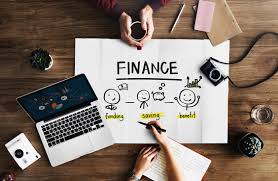Fintech’s Role in Tackling Financial Inequality
 Finance Freak
Finance Freak
Financial inequality is a contemporaneous global issue where enormous differences exist between access and uses of financial services among diverse socioeconomic groups. Indeed, millions within the developing areas of the world remain either unbanked or underbanked-that is, without access to basic financial services such as savings accounts, credit, insurance, and investment opportunities. It is, therefore, necessary that more and more fintech can develop new answers to these issues: democratizing access, reducing costs, and improving financial inclusion. Developing this branch, it might fill the gap between those included and those excluded financially, thus remedying financial inequality at large.
Probably the most important way in which fintech tackles financial inequality is through better accessibility of financial services for underserved populations. Traditional banking has not been able, for a long time now, to reach the low-income population and the families dwelling in remote areas due to the added cost in setting up physical infrastructures to serve them, as well as maintaining those small accounts. Conversely, the fintech firms have utilized the various digital platforms, mobile technology, and the internet in providing financial services with no physical contact. This therefore provides an avenue for people in rural or under-served areas to use financial tools by means of smartphones, even when they may live miles away from the nearest bank branch.
Mobile money platforms, such as M-Pesa in Kenya, illustrate how fintech can completely revolutionize the concept of financial inclusion. With M-Pesa, using a cellular phone, one can deposit, withdraw, and transfer cash; hence, this promotes essential financial services to millions excluded by the formal banking system. This has gone a long way in ensuring a reduction in financial inequality within Kenya and other countries where mobile money has been adopted through effective enablement of users in active participation within the economy, saving, and gaining access to microloans. This has further inspired similar innovations elsewhere, such as bKash in Bangladesh and Paytm in India, further expanding access to financial services.
Besides improving access, fintech reduces the cost of financial services-the other critical factor in reducing financial inequality. Traditional banking services often come with considerable fees, let alone the small transactions which low-income people cannot afford. In contrast, the application of technology by Fintech firms reduces overheads, possibly passing it on to customers. For example, digital banks and pay platform providers would afford to cut down transaction charges, charges on account maintenance, and currency conversion charges. This means that poor people and micro-businesses will more easily and at lesser cost manage their cash through savings.
Another good example of how fintech is reducing the barrier to financial services is the peer-to-peer lending platforms. It cuts out the traditional intermediary of finance, the banks, and connects the borrower directly to the lender. P2P makes credit available to individuals and small businesses that may not have formal credit history or collateral often called for by traditional banks. This is especially important for entrepreneurs and small businesses in developing countries that, otherwise, would not get loans from mainstream financial institutions. In this way, P2P lending platforms reduce financial inequality by equipping people with what they need to invest in businesses, improve livelihoods, and create further economic opportunities within their communities.
Another critical function of FinTech has been democratizing investment opportunities, important in the context of decreasing wealth disparities. In most countries and over a long period, access to diverse investment products had been restricted to rich or institutional investors. However, FinTech platforms, such as robo-advisors and investment apps, torn down these barriers by offering low-cost user-friendly investment services to larger pools of users. Most of them use algorithms for personalized investment advice and have made it possible even for persons with little knowledge of finance to invest in small sums of money. By far more importantly, this opens up more avenues of investment through which Fintech makes the growth of wealth easier and the sharing in the fruits of economic growth.
Subscribe to my newsletter
Read articles from Finance Freak directly inside your inbox. Subscribe to the newsletter, and don't miss out.
Written by
